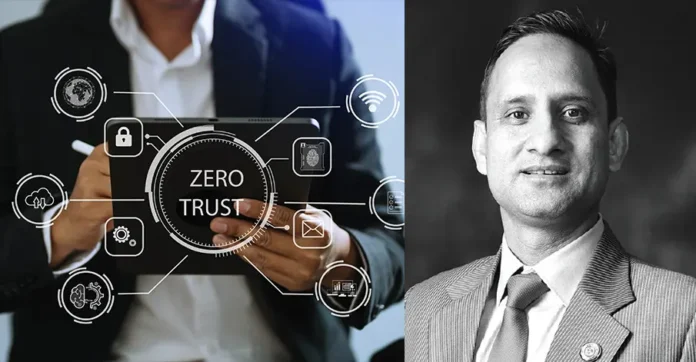
In today’s rapidly evolving digital landscape, banks face unprecedented challenges in securing their IT infrastructure. Traditional network security models relying on perimeter defenses are no longer sufficient against sophisticated cyber threats. The Zero Trust Security Model has emerged as a robust framework to address these challenges, providing a comprehensive approach to securing organizational resources.
Zero Trust is a security concept that changes how organizations manage access to their resources. Unlike traditional models that implicitly trust users within the network perimeter, Zero Trust operates on the principle of “never trust, always verify.” This approach assumes threats exist both inside and outside the network, so no entity—whether a user or a device—should be trusted by default. Key principles include treating all digital assets as resources, enforcing per-connection access control, securing all communication channels by default, implementing dynamic access policies based on user identity and device attributes, and ensuring comprehensive resource authentication.
Many international standards organizations advocate for Zero Trust. The National Institute of Standards and Technology (NIST) has been instrumental in defining and promoting Zero Trust principles. According to NIST Special Publication 800-207, Zero Trust Architecture (ZTA) emphasizes strict identity verification for every person and device trying to access resources on a private network, regardless of location. This model requires continuous verification of user identities and access privileges, utilizing multiple data points such as user behavior and device health.
Adopting Zero Trust in a banking environment involves several critical steps. Micro-segmentation divides networks and resources into smaller segments to prevent lateral movement within the network. This method is valuable for financial institutions to maintain tight control over critical resources and sensitive information.
Identity and Access Management (IAM) is another cornerstone of Zero Trust Security. Banks must implement robust methods such as multifactor authentication (MFA) and biometric verification to ensure users are authenticated before access is granted. This involves both authentication (AuthN) and authorization (AuthZ). User access rights should adapt based on real-time risk assessments and contextual information, minimizing the risk of unauthorized access.
Continuous monitoring and threat intelligence are central to the Zero Trust model. By constantly observing network activity, user behavior, and device health, potential threats can be identified and mitigated promptly. Implementing security information and event management (SIEM) systems, intrusion detection and prevention systems (IDPS), and behavior analytics solutions help detect and address security issues proactively. Integrating threat intelligence with continuous monitoring enhances an organization’s ability to detect, analyze, and respond to new threats in real time.
Encrypted communications and secure remote access are essential for financial institutions, especially with remote work and cloud services. Zero Trust Security encourages using encryption methods like Transport Layer Security (TLS) to protect interactions between users and resources. Secure remote access options such as virtual private networks (VPNs) and secure access service edge (SASE) systems ensure that remote connections adhere to Zero Trust principles.
The benefits of Zero Trust for banks are significant. By continuously verifying access and limiting permissions, the risk of data breaches is significantly reduced. Zero Trust minimizes the damage caused by malicious insiders by enforcing strict access controls. Adhering to regulatory requirements becomes easier with detailed access logs and continuous monitoring, providing a more robust and resilient security framework capable of adapting to new threats.
However, implementing Zero Trust is not without its challenges. It requires a comprehensive understanding of the existing IT environment, a commitment to continuous monitoring, and a shift in organizational culture towards security-first thinking. While the transition requires careful planning and execution, the benefits in terms of reduced risk and improved compliance make it a compelling strategy for modern cybersecurity challenges.






